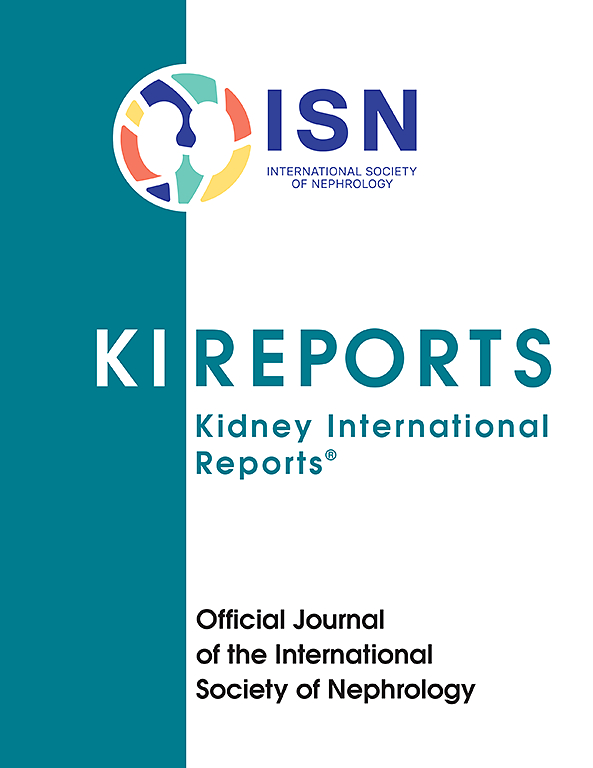Whole Exome Sequencing in Chinese Pediatric Patients With Nephrolithiasis
IF 5.7
2区 医学
Q1 UROLOGY & NEPHROLOGY
引用次数: 0
Abstract
Introduction
The incidence of pediatric nephrolithiasis has been increasing, and the role of genetic factors has garnered attention in recent years. This study aimed to explore the genetic basis underlying pediatric nephrolithiasis in Chinese population.
Methods
Whole exome sequencing (WES) was conducted in a consecutive cohort of 456 children over a 11-year period. Clinical and genetic data were systematically collected, analyzed, and comprehensively compared.
Results
Average age was 4.2 years with a male-to-female ratio of 2.2. A total of 260 causative variants in 16 genes were identified in 141 children, resulting in a positive molecular diagnosis rate of 31%. Of the causative variants, 43% were novel. The most prevalent diagnoses were primary hyperoxaluria (PH) (AGXT: 20%, GRHPR: 11%, and HOGA1: 24%) and cystinuria (SLC3A1: 18% and SLC7A9: 14%). Children with positive molecular diagnoses were more likely to have stone episodes, bilateral stones, multiple stones, or nephrocalcinosis (all P < 0.05). Children with AGXT defects were more prone to have severe clinical manifestations, and those with HOGA1 defects and males with SLC3A1 and SLC7A9 defects tended to be diagnosed at a younger age. The concordance rate between suspected clinical diagnoses and molecular diagnoses was 81%. At least 29% of children could benefit from additional clinical advice based on a molecular diagnosis.
Conclusion
A genetic etiology was identified in 141 of 456 of pediatric patients (31%) with nephrolithiasis in a Chinese cohort. A positive molecular diagnosis is a risk factor for severe clinical presentation of pediatric nephrolithiasis. WES has the potential to be used to confirm or even modify clinical diagnoses, thereby facilitating individualized therapeutic and preventive interventions.

中国儿童肾结石患者的全外显子组测序
近年来,儿童肾结石的发病率不断上升,遗传因素在其中的作用引起了人们的关注。本研究旨在探讨中国儿童肾结石的遗传基础。方法采用全外显子组测序(WES)对456名儿童进行连续11年的研究。系统收集、分析、综合比较临床和遗传资料。结果患者平均年龄4.2岁,男女比2.2。141名儿童共鉴定出16个基因的260个致病变异,阳性分子诊断率为31%。在致病变异中,43%是新奇的。最常见的诊断是原发性高草酸尿(PH) (AGXT: 20%, GRHPR: 11%, HOGA1: 24%)和胱氨酸尿(SLC3A1: 18%, SLC7A9: 14%)。分子诊断阳性的儿童更容易发生结石发作、双侧结石、多发性结石或肾钙质沉着症(所有P <;0.05)。患有AGXT缺陷的儿童更容易出现严重的临床表现,而患有HOGA1缺陷的儿童以及患有SLC3A1和SLC7A9缺陷的男性往往更早被诊断出来。疑似临床诊断与分子诊断的符合率为81%。至少29%的儿童可以从基于分子诊断的额外临床建议中获益。结论:在一项中国队列研究中,456例儿童肾结石患者中有141例(31%)确定了遗传病因。阳性分子诊断是儿童肾结石严重临床表现的危险因素。WES有可能用于确认甚至修改临床诊断,从而促进个体化治疗和预防干预。
本文章由计算机程序翻译,如有差异,请以英文原文为准。
求助全文
约1分钟内获得全文
求助全文
来源期刊

Kidney International Reports
Medicine-Nephrology
CiteScore
7.70
自引率
3.30%
发文量
1578
审稿时长
8 weeks
期刊介绍:
Kidney International Reports, an official journal of the International Society of Nephrology, is a peer-reviewed, open access journal devoted to the publication of leading research and developments related to kidney disease. With the primary aim of contributing to improved care of patients with kidney disease, the journal will publish original clinical and select translational articles and educational content related to the pathogenesis, evaluation and management of acute and chronic kidney disease, end stage renal disease (including transplantation), acid-base, fluid and electrolyte disturbances and hypertension. Of particular interest are submissions related to clinical trials, epidemiology, systematic reviews (including meta-analyses) and outcomes research. The journal will also provide a platform for wider dissemination of national and regional guidelines as well as consensus meeting reports.
 求助内容:
求助内容: 应助结果提醒方式:
应助结果提醒方式:


